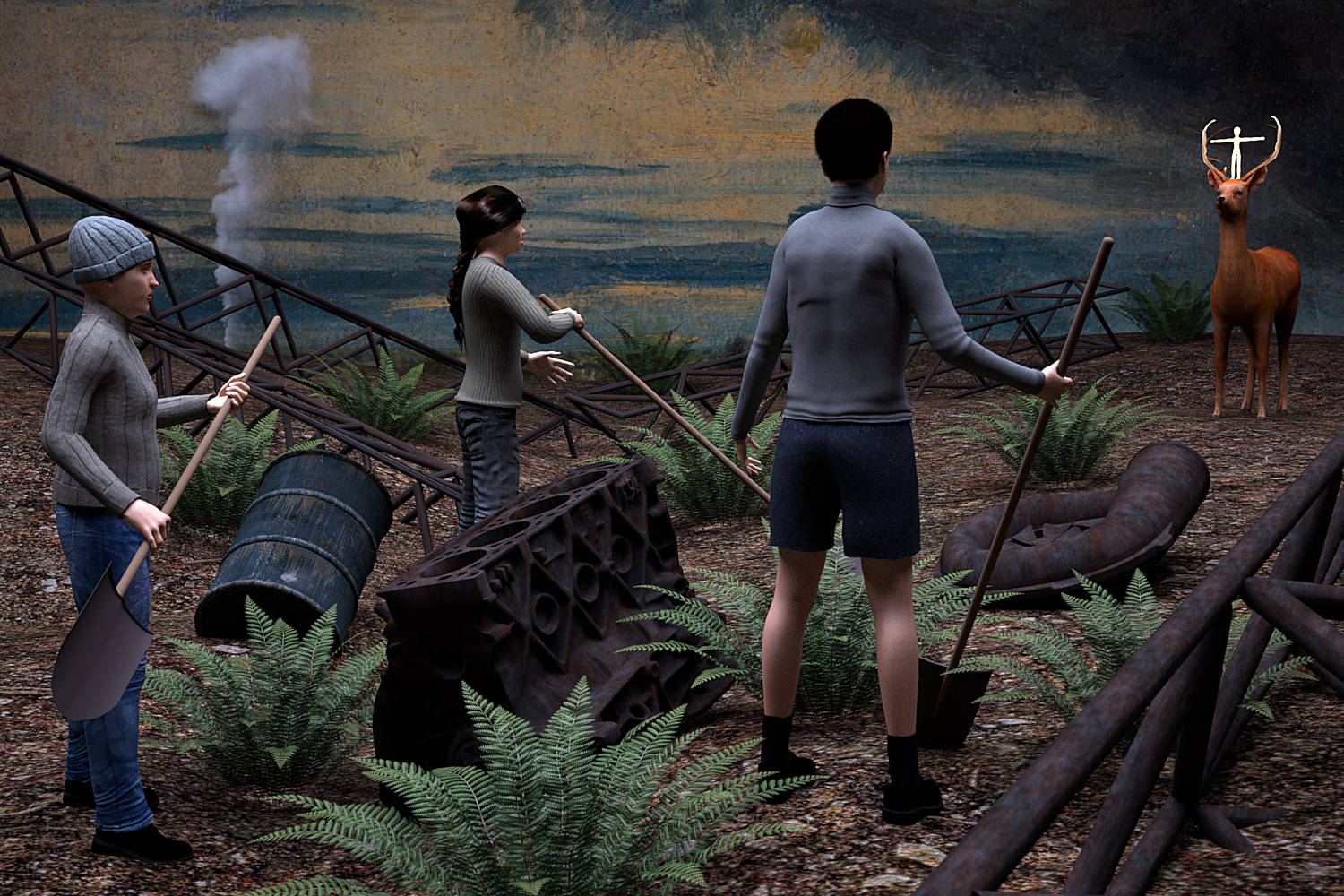
Riddley Walker
2018
Inkjet on watercolour paper
90 x 60 centimeters
The Russell Hoban novel Riddley Walker stands out for its singularly imagined post-apocalypse England. Language has broken down into a crude argot which Riddley uses to narrate his story, the survivors fear feral dog packs, they unearth old machinary so that the metal can be refashioned into primitive tools and entertainment consists of Punch and Judy shows and Riddley's narration of the legends that serve as a warning against the use of the atom, the cause of their downfall.
The legends he narrates speak of the atom as the “Li’l Shynin’ Man” who appears in this print between the antlers of a deer in the figure of tiny metallic man whose arms are outstretched in the form of a cross, a symbol about belief referencing the conversion of St Eustace to Christianity. The workers who have been busy digging out rusty old machines watch this phenomenon transfixed. One worker has the logo 'Guy Montag' on the back of his sweater which is a reference to the dystopian book burner described in the Ray Bradbury novel Fahrenheit 451. The company name Deckard which is stencilled onto the oil drum is the name of the replicant hunter in another great novel about a dystopian future, Phillip K. Dick's Do Androids Dream About Electric Sheep, familiar to many speculative fiction fans through the Ridley Scott movie adaption, Blade Runner.
Riddley Walker by Russell Hoban : The Guardian
Saint Eustace, Albrecht Durer : Netmuseum
Fahrenheit 451 : Wikipedia
Do Androids Dream of Electric Sheep : Wikipedia